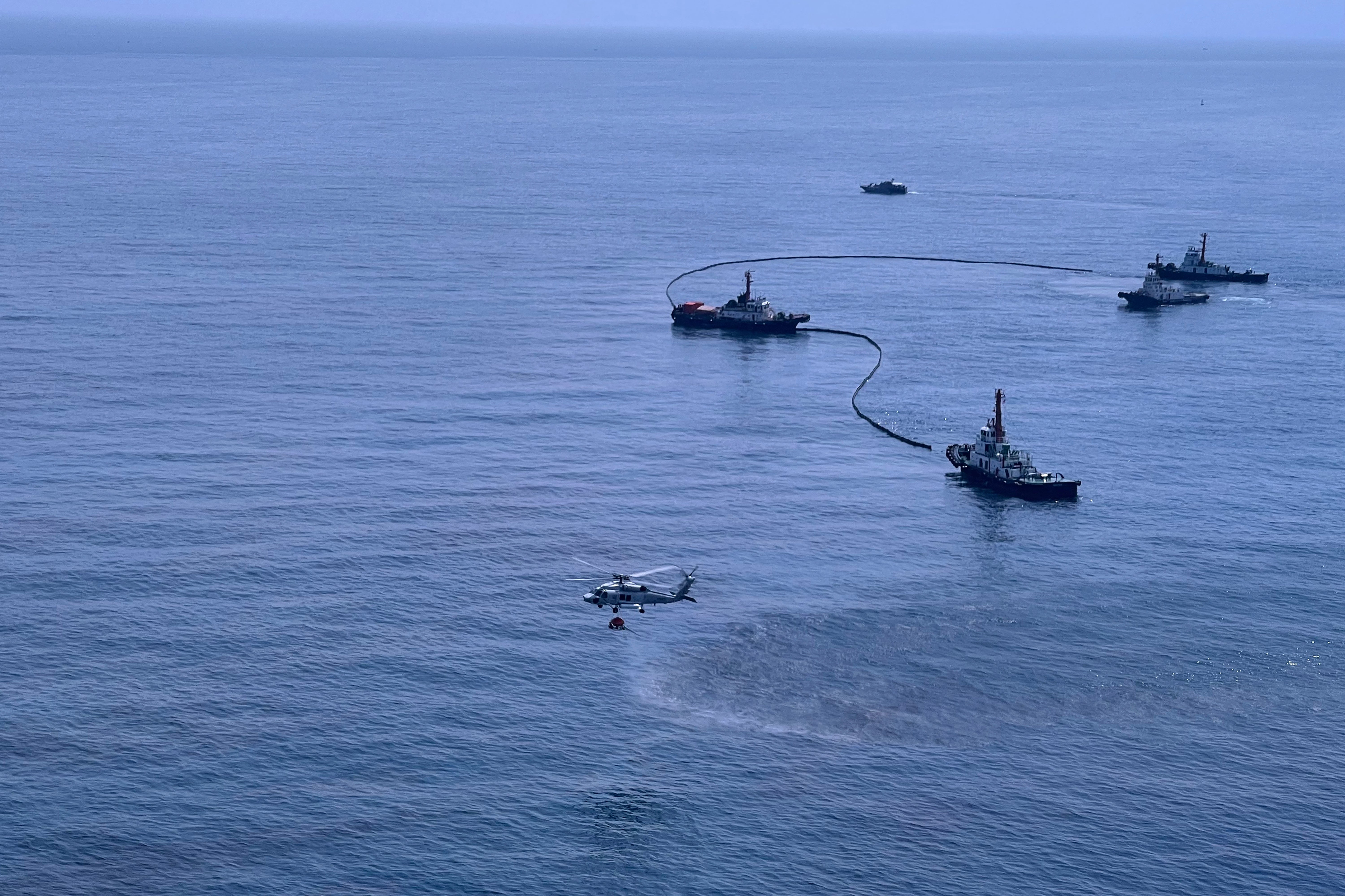Thailand deploys more assets as oil slick threatens beaches
An aircraft from a company specializing in recoveries from oil spills has arrived from Singapore to join an urgent effort to clean up an oil slick before it could hit beaches in eastern Thailand

Your support helps us to tell the story
From reproductive rights to climate change to Big Tech, The Independent is on the ground when the story is developing. Whether it's investigating the financials of Elon Musk's pro-Trump PAC or producing our latest documentary, 'The A Word', which shines a light on the American women fighting for reproductive rights, we know how important it is to parse out the facts from the messaging.
At such a critical moment in US history, we need reporters on the ground. Your donation allows us to keep sending journalists to speak to both sides of the story.
The Independent is trusted by Americans across the entire political spectrum. And unlike many other quality news outlets, we choose not to lock Americans out of our reporting and analysis with paywalls. We believe quality journalism should be available to everyone, paid for by those who can afford it.
Your support makes all the difference.An aircraft from a company specializing in recoveries from oil spills arrived Thursday from Singapore to join an urgent effort to clean up an oil slick before it could hit beaches in eastern Thailand officials said.
The C-130 joined other planes, ships and a helicopter deployed by the Thai navy to contain the damage from the Star Petroleum Refining Public Company’s oil that leaked Tuesday night from a mooring station in the Gulf of Thailand.
Information from Thailand’s Geo-Informatics and Space Technology Development Agency suggested that prevailing winds could blow the oil slick to major beaches in Rayong province or Samet Island by Friday evening if not cleaned up before then, said Thai navy's Rear Adm. Wichanu Thupa-ang.
He said the agency’s report estimated that the slick covered 11.65 square kilometers (4.5 square miles).
Star Petroleum Refining estimated that a total of 20-50 tons of oil had been spilled. It said in a statement that the amount of oil in the slick has been reduced to 5.3 tons since dispersant sprays were deployed by aircraft Wednesday. Some initial estimates of the amount of spilled oil were much higher.
Wichanu said the largest part of the oil slick would be contained within an area marked by buoys and then sucked by skimmers into holding tanks and properly disposed of.
At the same time, the oil headed toward the beach would also be contained and redirected to the open sea, he said.
Pornsri Sutthanarak, deputy director-general of the Marine and Coastal Resources Department, said that if the oil reaches the coast, it might affect 59 acres of coral and 118 acres of seagrass, causing environmental damage that would take time to rehabilitate.